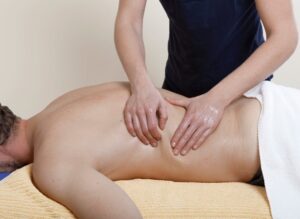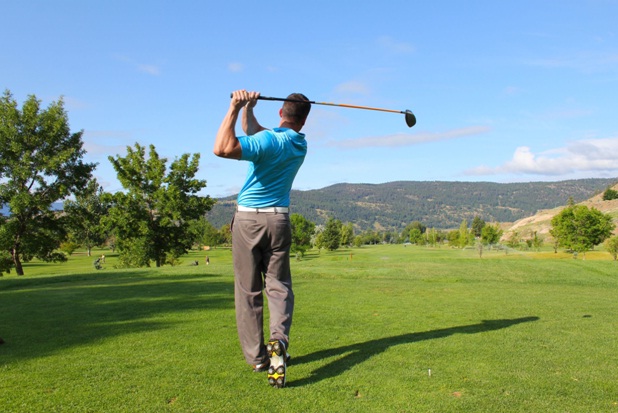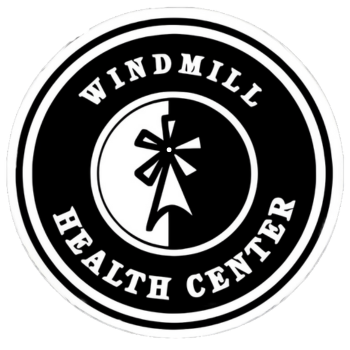Golf may not be the most physically demanding sport, but it still places a great deal of stress on the lower back. Overtime, this repetitive stress can lead to acute injuries and chronic pain, leaving people unable to continue playing the game they love. Although most of these acute injuries will naturally heal themselves over a few days or weeks, some people find their symptoms never subside, and professional attention may be necessary. Following is a description of how golf injuries in the lower back arise, along with what you can do to treat the symptoms and get back to playing pain-free.
Causes of Low Back Pain during Golf
Low back pain is the most common injury sustained during a game of golf, and it is typically the result of the repetitive swinging motion characteristic to this sport. If a golfer’s swing mechanics are not correct, the stress placed on the back can lead to injuries in its supporting structures, in turn causing low back pain. However, even golfers who exhibit proper swinging mechanics can develop similar injuries as a result of the high number of swings they perform each round.
Several structures in your back may become injured and causechronic pain, including discs, ligaments, supporting muscles, and facet joins. Of these structures, the most prevalent culprit of low back pain is a slipped or bulging disc, especially in older golfers. When left untreated, this injury can lead to severe chronic pain in the lower back, as well as cause serious medical conditions like sciatica.
Treatment
As most low back injuries sustained during a game of golf are not severe, there are a number of home remedies you can perform to relieve your pain. The first step to a healthy recovery is to take a few days off for rest. During this period, apply ice or heat to the affected region and take anti-inflammatory medications to alleviate your pain. As your body begins to recover, slowly incorporate light exercise and stretching to promote healthy blood flow to your lower back without aggravating your injury further. After a few days, your pain should have subsided enough to return to golfing, but if not, you may need to seek medical attention.
Chiropractic Relief
 If your back pain does not subside between two to six weeks after the injury occurred, you should consult a medical professional for treatment. One of the safest and most effective treatments for low back pain is chiropractic care. At Windmill Health Center, we specialize in providing natural, non-invasive solutions to treat injures and pain in the lower back, with a special focus placed on treating sports-related injuries.
If your back pain does not subside between two to six weeks after the injury occurred, you should consult a medical professional for treatment. One of the safest and most effective treatments for low back pain is chiropractic care. At Windmill Health Center, we specialize in providing natural, non-invasive solutions to treat injures and pain in the lower back, with a special focus placed on treating sports-related injuries.
After an initial assessment of your injury and medical condition, our team of specialists will develop a unique treatment plan to relieve your pain and prevent it from returning in the future. Through a combination of chiropractic adjustments, massage therapy, and therapeutic exercises, you can be rest assured that your low back pain will be healed safely and effectively.
Whether you are a seasoned golfer or simply enjoy a few rounds each year, nothing will hinder your game faster than low back pain. In order to stay out of the clubhouse and on the links, be sure to listen to your body as the game progresses and don’t ignore minor aches and pains as they develop. Taking a day off during the early stages of an injury will give you a much faster and healthier recovery than waiting until the injury is more severe and professional attention is needed.
About the Author:
Dr. Marc Browner is a Co-owner and practicing chiropractor at Windmill Health Center in Weston, Florida. A graduate of the University of Florida in 1991, he earned his Doctor of Chiropractic degree from Life Chiropractic in 1995. In private practice since 1998, Dr. Browner is a member of the Florida Chiropractic Society, the Florida Chiropractic Association, and he attends continuing education seminars, classes, and workshops to remain abreast of the most current treatment methods and technological advances in the field.


